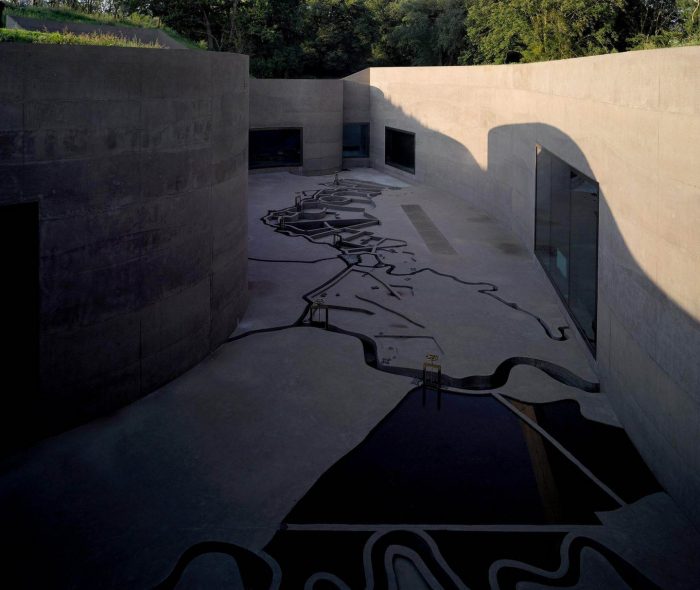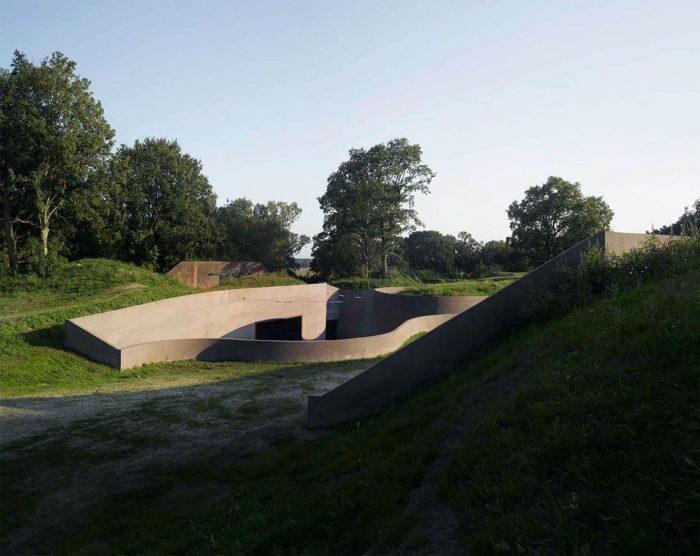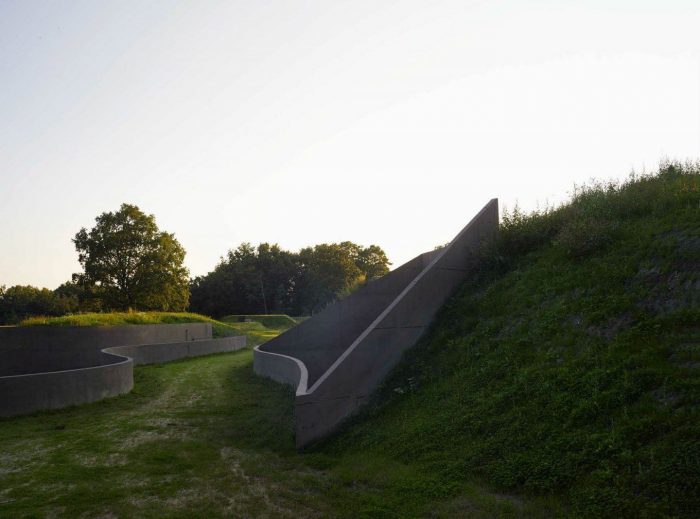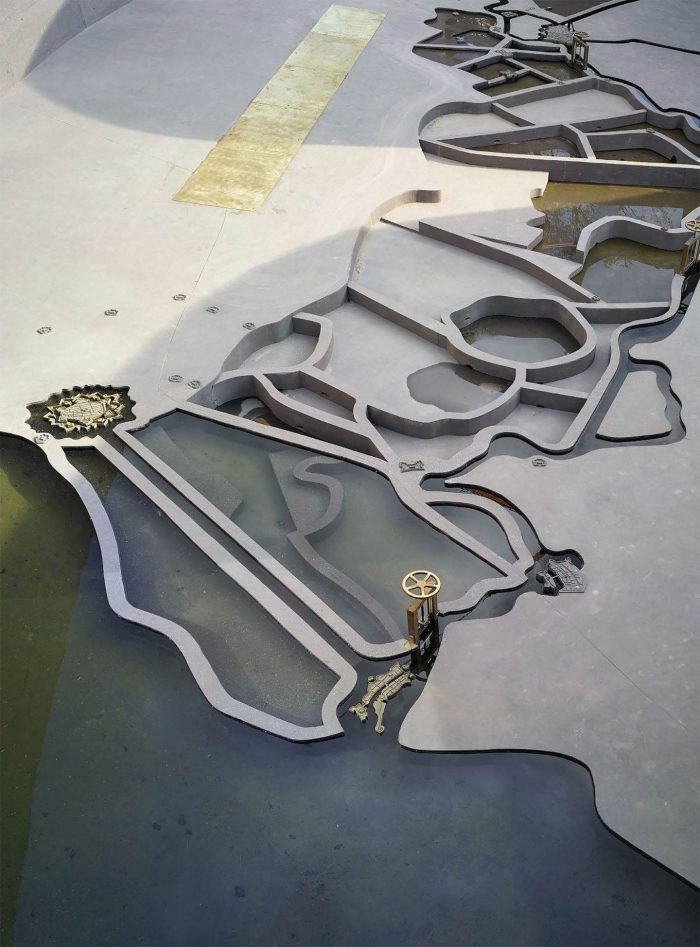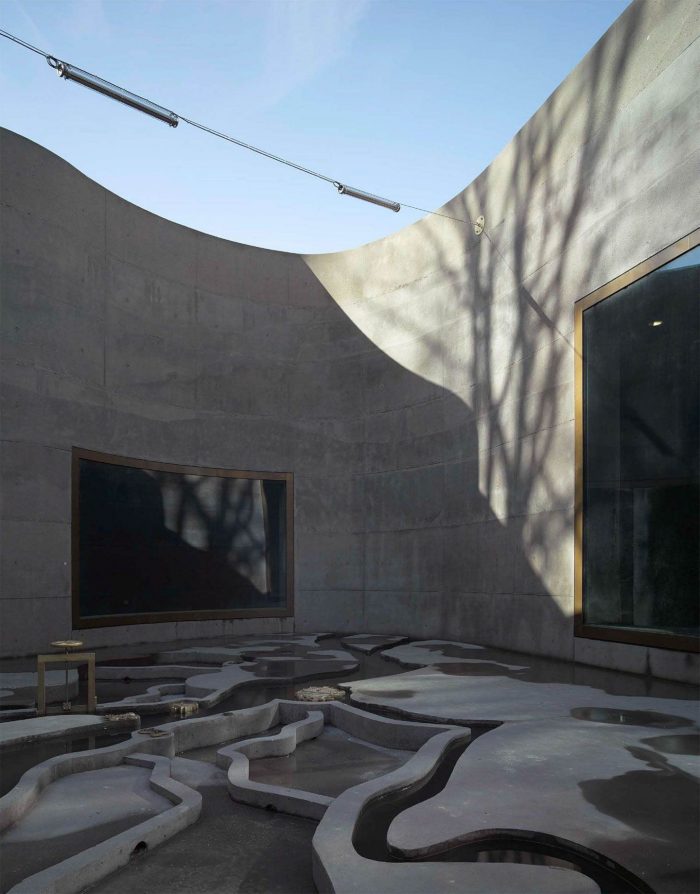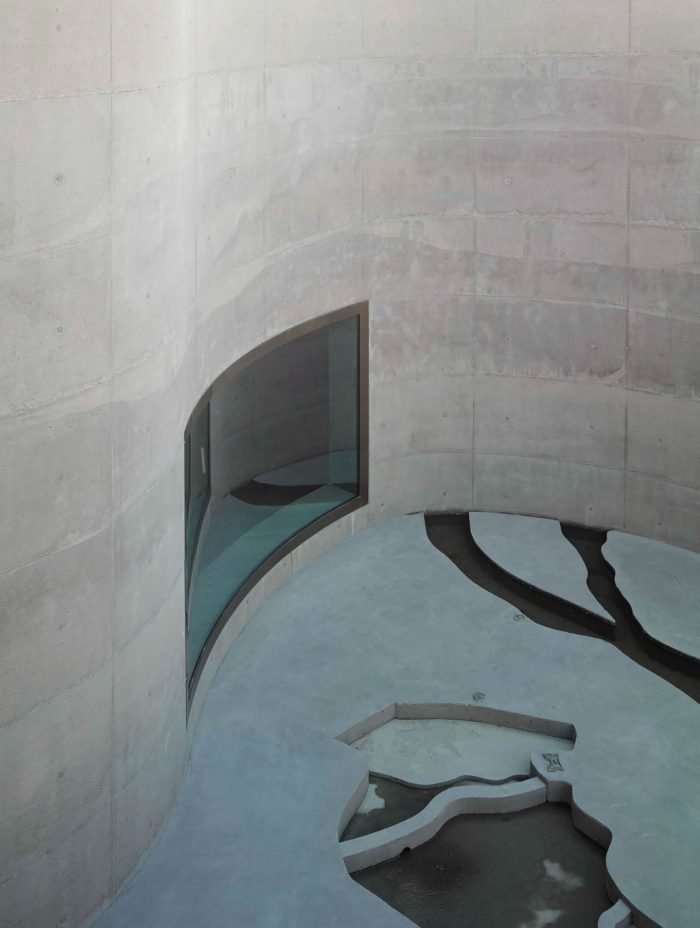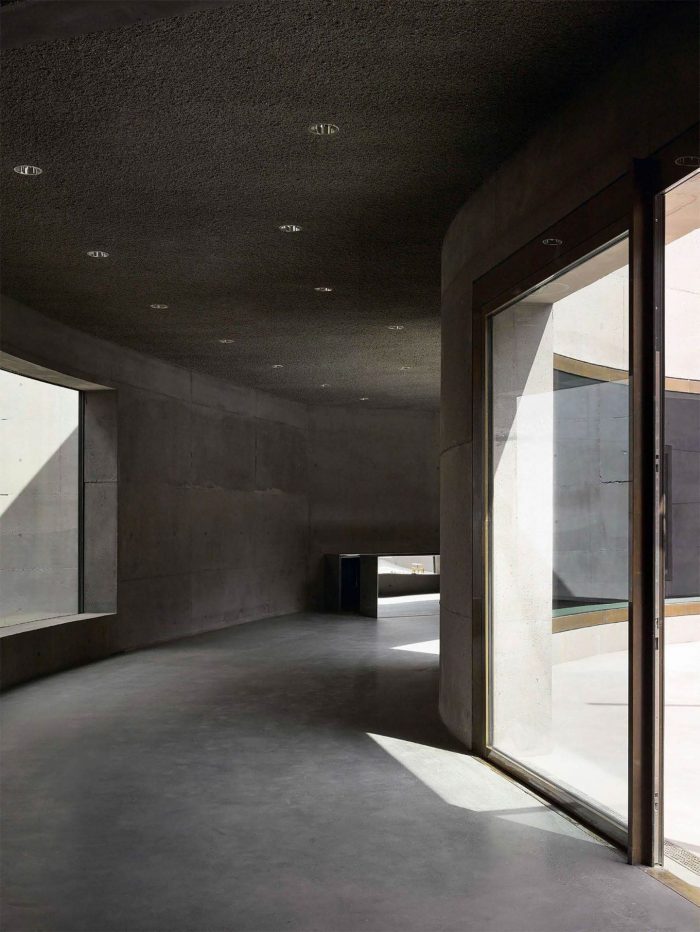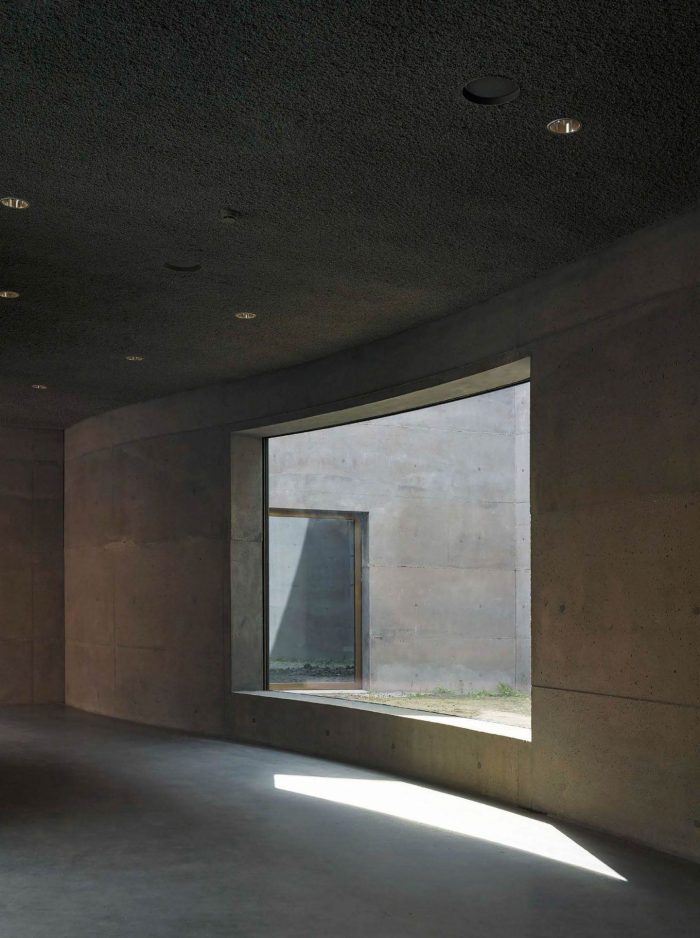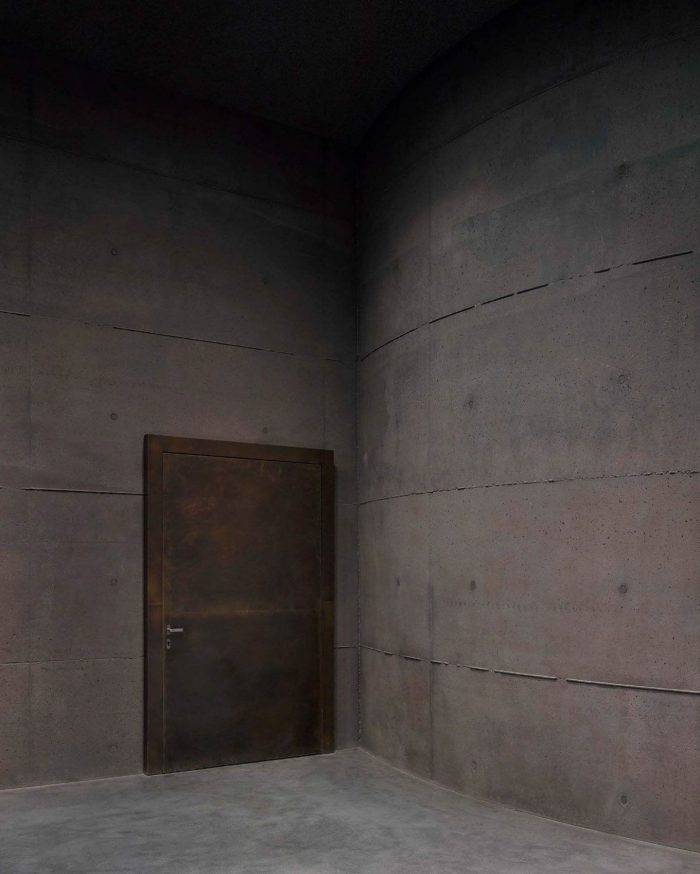该博物馆旨在致敬荷兰独特的防御历史; 特别是,他们使用洪水作为战斗技术。2014年,荷兰公司Studio Anne Holtrop为联合国教科文组织设计了一个有趣的补充,创建了一个看似被土地吞噬的博物馆。
The Waterline Museum in the Netherlands pays homage to the country’s unique defense history; specifically, to their use of flooding as a battle technique. In 2014, Dutch firm Studio Anne Holtrop designed an intriguing addition to the UNESCO listed site, creating a museum that appears to have been swallowed by the land.
该博物馆位于乌得勒支郊外的Fort bij Vechten,拥有防御作用,在1588年至1940年之间故意淹没大片土地。该系统由堤坝,船闸和运河组成,使得洪水泛滥成灾。淹没5公里长的土地。为纪念这一历史,当地工作室Penne Hangelbroek和West 8修复了该遗址,将其重新构想为文化中心。
Studio Anne Holtrop工作室采用雕塑方式对博物馆做出改造,让景观拥抱建筑的棕灰色混凝土外观。部分地下博物馆让人想起一系列沙坑。在原有的营房前面,画廊和礼堂以一个庭院为中心,该庭院拥有整个博物馆的模型复制品。在1:1600的比例,85公里的水线长度为54米。深度以1:50为模型,当被淹时,庭院仅需25分钟。虽然这需要数周才能在陆地上发生,在这里它成为对历史的精致再现,以完全现代的方式执行。
Located on Fort bij Vechten, just outside of Utrecht, the museum holds a defense mechanism that was used to intentionally flood vast areas of land between 1588 and 1940. The system, formed of dykes, locks, and canals, enabled the flooding of an 85 by 5-kilometer strip of land. To celebrate this history, local studios Penne Hangelbroek and West 8 rehabilitated the site, reimagining it as a cultural center.
Studio Anne Holtrop, took a sculptural approach to its contribution to the museum, letting the landscape embrace the brown-grey concrete exterior of the building. The partially subterranean museum is reminiscent of a collection of bunkers. Fronted by the original brick barracks, the gallery and auditorium are centered around a courtyard that features a model replica of the entire New Dutch Waterline. At a scale of 1:1600, the 85-kilometer waterline becomes 54 meters in length. The depth has been modeled at 1:50, and when flooded, the courtyard fills in just 25 minutes. While this would take weeks to occur on land, here it becomes a delicate reminder of the past, executed in a thoroughly contemporary manner.
DESIGN: Studio Anne Holtrop
PROJECT: The Waterline Museum
PHOTOGRAPHER: ©Bas Princen




